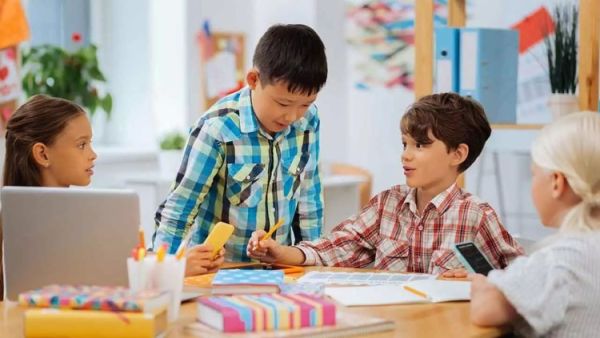
Traditional educational paradigms that just use lectures and rote memorization are no longer enough for students entering a dynamic, constantly changing labor market as the globe becomes increasingly linked and complicated. These days, educating students for real-world problems requires giving them both academic knowledge and flexible, useful abilities. Hands-on learning is one of the best methods to do this.

Engaging pupils in exercises that replicate real-life scenarios is known as hands-on learning, experiential learning, or active learning. Students learn by doing, whether it means constructing a prototype, replicating a business model, performing scientific research, or fixing a community issue. This method helps close the often mentioned gap between theory and practice, increases knowledge, and stimulates curiosity.
The development of critical thinking and problem-solving abilities is one of the main advantages of practical experiences. Problems in the real world are seldom textbook-based or linear. They need careful consideration, originality, and judgment under unclear circumstances. Like in a professional or social context, hands-on activities force students to think quickly, draw connections across disciplines, and modify their approaches as they learn from mistakes.
These experiences also foster vital soft skills like resilience, leadership, collaboration, and communication. Students must listen to others, settle disputes, and accept responsibility while working on collaborative projects. Students develop confidence in their capacity to make significant contributions to society when they construct something concrete, such as a business proposal, scientific model, or social project.
Opportunities for work-based learning, including volunteering, job shadowing, and internships, are also very beneficial. They expose students to professional manners, real-time problem-solving, and workplace standards firsthand. In addition to influencing career decisions, these experiences assist students in making meaningful use of their academic knowledge. To translate class theory into quantifiable influence, an environmental science student can, for instance, intern at a conservation NGO and work on a real sustainability project. In the classroom, project-based learning accomplishes the same goal. Students use research, teamwork, and creativity to address real-world problems via long-term, multidisciplinary projects, such as developing a digital marketing campaign or inventing a water filtration system. By simulating real-world limitations including time limits, financial constraints, or stakeholder expectations, these projects help students become ready for professional settings.
These experiential learning opportunities may be enhanced by technology. Students may investigate complicated systems and work together internationally using virtual laboratories, simulations, coding platforms, and collaborative digital tools. In order to obtain cross-cultural and digital collaboration skills, a class in India may, for example, collaborate with classmates in another nation to co-develop a software solution for a common issue.
An important part of this change is played by educators. By creating activities, facilitating reflection, and promoting student agency, they must transform into experience facilitators. Evaluation must also change to prioritize process over memorization. Rubrics that assess creativity, collaboration, flexibility, and applicability to the real world provide a more thorough assessment of students’ preparedness.
Infrastructure that facilitates experiential learning, such as maker spaces, scientific laboratories, fieldwork opportunities, and collaborations with local and business groups, must also be funded by educational institutions and politicians. The objective is to provide an environment where students may experiment, fail safely, and develop resilience—skills that textbooks cannot impart on their own.
In the end, experiential learning is not only a fad in education; it is essential in the modern world. It equips students to behave ethically, think for themselves, and adjust fast in a world when intellectual ability is not enough. It gives students the courage to pursue vocations, give back to their communities, and address actual issues.
By adopting experiential education, we are preparing children for life, not simply for tests. By doing this, we raise a generation that is not just informed but also competent, kind, and prepared to succeed in the real world.
-
We've found Princess Kate's exact 'tummy-friendly' jeans - get her look

-
Maharashtra Politics: Jayant Patil Charts Revamp Plan For NCP(SP) Amid Merger Buzz, Exodus Of Leaders

-
Mumbai Local Train Update: Central Railway To Operate Night Traffic Blocks Between Mulund And Kanjur Marg On May 14–16 For Girder Removal

-
Indian Railways Pays Glowing Tribute To Operation Sindoor Heroes With Tiranga Yatras, Tricolour Illuminations

-
Dr. Badar Khan Suri scores major victory as judge orders release of Georgetown scholar
